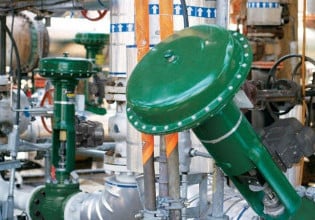A consortium led by the University of Wollongong (UOW) aims to develop 'game-changing' sodium-ion battery technology to help drive increased use of renewable energy. The project consortium will develop low-cost, high-density battery storage to integrate renewable energy sources, such as solar power, into the grid.
The $10.6 million project involves $2.7 million from the Australian Renewable Energy Agency (ARENA) through its industry-researcher collaboration R&D funding round. UOW and industry partners are contributing more than $1.8 million in cash and substantial in-kind contributions, while Chinese partners are also adding significant support.
This will directly impact on the uptake of renewables. A single, cheap and integrated solution for renewable energy generation, storage and management will make it cheaper and simpler for consumers.
The Australian Government has set a target of sourcing 20 per cent of power generation from renewables by 2020. Yet, the intermittent nature of solar, wind, wave and other renewable sources, coupled with the high cost of large-scale battery storage, imposes a barrier on wider uptake.
Over the course of the four-year project, three UOW research groups will combine their expertise in battery technology, power reliability and building integration to develop sodium-ion battery materials technology in a modular and expandable battery packaging platform.
Current lithium-ion battery technology is expensive and uses relatively rare materials, while lead-acid technology is a mature and cheap but has relatively poor energy density, which is a problem for use in large-scale storage systems. As electric vehicles become more popular, demand for lithium-ion batteries will stretch an already limited supply of raw materials, pushing up the price of the technology.
Sodium however, is abundant, cheap and the element lends itself to being a ready replacement for lithium. The challenge for sodium-based batteries is to increase their charge and discharge rate and reduce the overall size of the batteries.
UOW’s Institute for Superconducting and Electronic Materials (ISEM), which has a well-established world reputation in energy storage materials research will develop a pilot-scale sodium materials production facility to prototype and develop the modular and expandable battery packs. The battery packs will be tested in a residential and industrial setting. A small pack will be installed at the Illawarra Flame house, a sustainability demonstration site at UOW’s Innovation Campus.
A larger battery pack integrated in a state-of-the-art energy management system that monitors and controls how the renewables generation, battery pack and energy consumption interact will be installed at a Sydney Water pumping station in Bondi.
UOW project leader and ISEM Director Professor Shi Xue Dou said a single, cheap and integrated solution for renewable energy generation, storage and management would significantly improve uptake of renewable power.
“This technology will be a game-changer in providing cheap, energy-dense storage in the context of an energy management system,†he said. “It will provide a path for Australia to reduce demand on the grid and the cost of infrastructure upgrades for utilities — particularly in remote regions.â€
ARENA CEO Ivor Frischknecht said the funding would create clear pathways for renewable energy technologies to move from the laboratory to field by fostering collaboration between research institutions and industry.
“Each successful project is focused on delivering commercially viable solutions, aimed at solving a current industry challenges. The rich array of industry partners shows the breadth of sectors that will be involved in the transformation of Australia’s energy networks and systems,†Mr. Frischknecht said.
“ARENA’s $17 million funding is leveraging substantial contributions from private and public sectors, with combined project values totaling more than $55 million. This will tap into our home-grown ingenuity and complement our existing portfolio of 144 R&D projects.â€
The UOW research groups involved in the project alongside ISEM are the Australian Power Quality and Reliability Centre (APQRC) and the Sustainable Buildings Research Centre (SBRC).
Their expertise will help design and model the energy management system and perform detailed energy-use studies to maximize the efficient use of the renewables generation, energy storage and grid connection. As an end user, project partner Sydney Water will provide a platform for evaluation of the sodium storage pack at its pumping station and demonstrates its commercial viability.
Sydney Water Energy Manager Philip Woods said this technology would be of great benefit to Sydney Water’s operations, with the potential to significantly reduce the cost of energy storage.
“We are pleased to support this project and look forward to testing this ground-breaking technology at one of our pumping stations in Bondi. The ability to store solar energy will increase the resilience of our plants, lower our operating costs and fits well with our commitment to cost-effectively generate and source electricity from renewable sources.â€
Key manufacturing partners – McNair Technology, Hebei ANZ, Hong Cheng Electric Power, and Nano-Nouvelle – will develop the manufacturing processes, techniques and capacity to mass-produce the required sodium-ion cells for this project, and to meet the anticipated demand for this technology in the future. The project will start in mid-2016 and is expected to be completed in early 2020.






